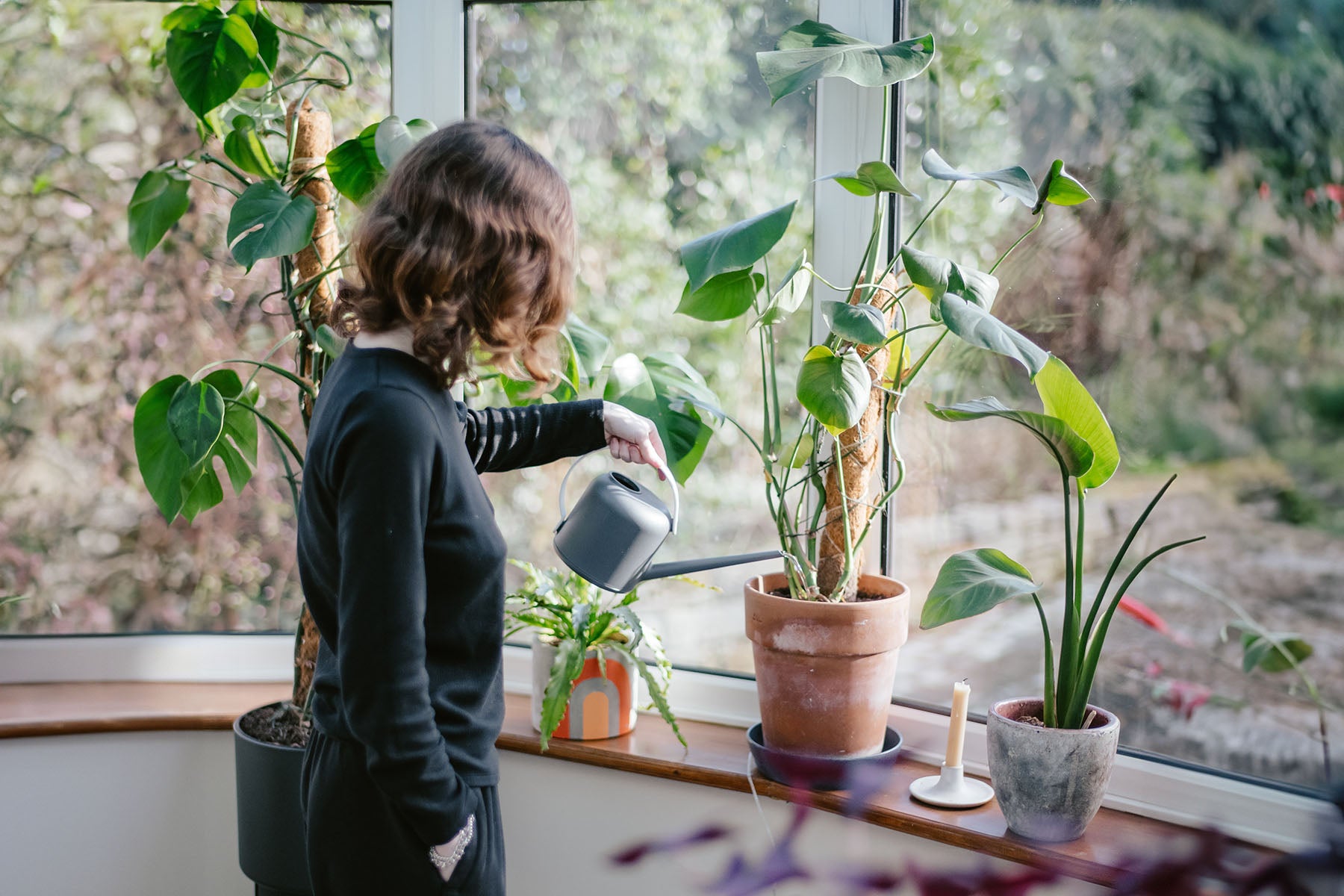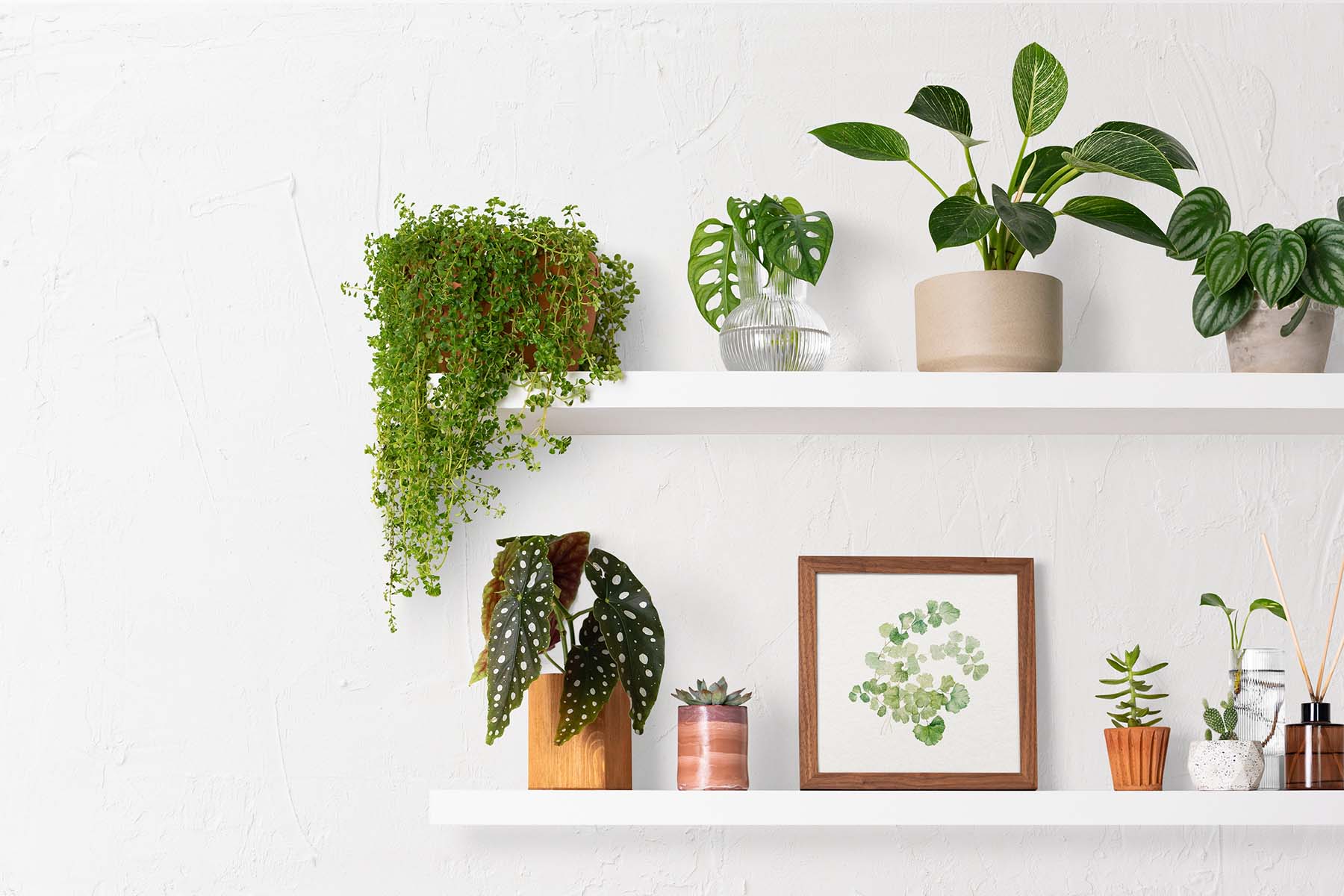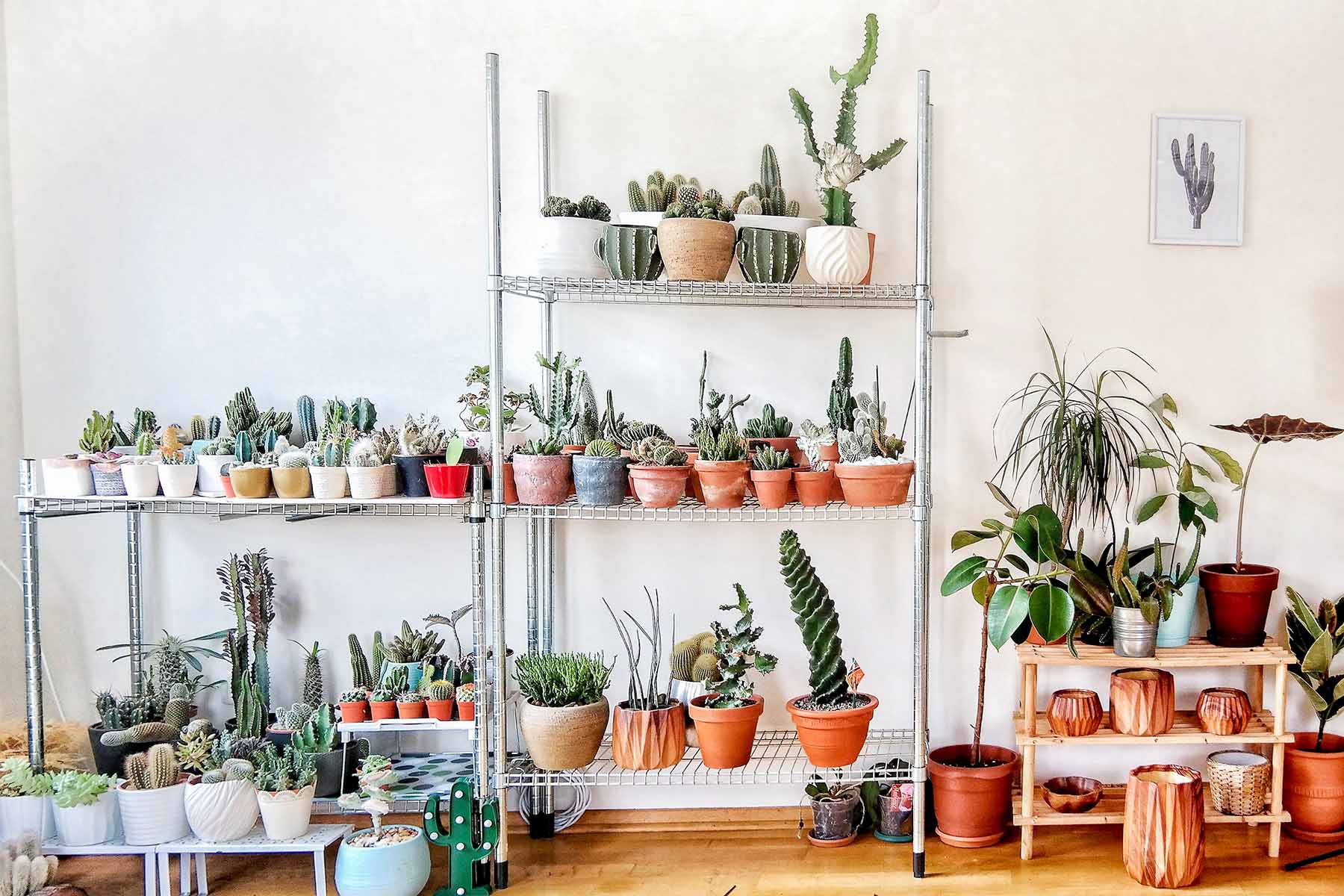
The Mystery of Overwatering: Finding the Right Balance for Your Tropical Plants
As plant parents, we all want to ensure our green friends are well-hydrated and healthy. However, overwatering is a common concern that often leads to confusion and misinformation. Many of us, especially beginners, perceive overwatering as a consequence of providing a generous amount of water to our beloved plants, keeping their soil consistently moist, and believe this is detrimental to the plants. This perception often results in plants receiving less water than they actually need, especially in the case of tropical plants that are accustomed to a more humid environment.
But what if we told you that overwatering isn't about the quantity of water you're giving to your plants, but rather about how frequently you're watering them? And what if moist soil isn't the evil many of us believe it to be?

Understanding how to properly water your plants is crucial to their overall health and survival. It's not as simple as watering them when you think they're thirsty or when the soil looks dry. The art of watering takes into account numerous factors such as the type of plant, its native environment, its current environment, the season, and even the type of pot it's in.
In this blog post, we aim to demystify overwatering, highlighting the difference between the common misconception and the reality of it. We will help you understand how to spot overwatering, avoid it, and most importantly, find the right watering balance for your tropical plants to ensure they're not just surviving, but thriving.
Let's dive in and unravel the mystery of overwatering!
What Is Overwatering Really?

When we talk about overwatering, many people visualize a plant drowning in water. However, it's not quite as simple as that. Overwatering isn't so much about the volume of water you're giving to your plants, but rather the frequency of your watering schedule. Plants don't like to have their roots sitting in water for prolonged periods, as this can lead to root rot and other diseases. Overwatering occurs when plants are watered too often, not when they're given a lot of water at once. This might seem counterintuitive, but plants need to have their soil thoroughly drenched then allowed to dry out to a certain depth (which varies with different types of plants) before the next watering.
Understanding Tropical Plants
To grasp the concept of overwatering and why frequency matters more than the amount, let's take a moment to understand the environment that tropical plants are adapted to. In their natural habitat, tropical plants are accustomed to a cycle of heavy rain followed by a period of drying out. The soil they grow in is typically fast-draining, which means that even though they get a lot of water, the excess doesn't stick around to cause problems.
These plants are built to store water in their leaves, stems, or roots, which allows them to survive until the next downpour. This is why tropical plants can handle (and even prefer) a good drenching—provided they are then given time to use the stored water before the next watering.
In our homes, we mimic this natural cycle by giving our plants a thorough watering and then waiting for the top layer of the soil to dry out before watering again. This practice ensures that we're not just pouring water onto the soil, but we're allowing the plant to soak up the water it needs, store it, and then use it up before it gets more.
Signs of Overwatering

Knowing how to identify the signs of overwatering is key to maintaining healthy plants. So what are the telltale symptoms of an overwatered plant?
-
Yellowing Leaves: While yellow leaves can be a sign of several issues, overwatering is one of the most common causes. If you find the leaves of your plant turning yellow, especially when accompanied with brown squishy spots, it could be a sign that you're watering too frequently. When the roots are constantly wet, they may become deprived of oxygen, leading to stress in the plant, which often shows up as yellow leaves.
-
Wilting: You might think that wilting plants need more water, but this is not always the case. Overwatering can also cause your plants to wilt. When a plant has too much water, the roots can become waterlogged and oxygen-starved, leading to limp, wilting leaves. It's a bit of an irony that both underwatering and overwatering can cause wilting, which is why it's crucial to check the moisture level in the soil before reaching for the watering can.
-
Root Rot: This is one of the more severe signs of overwatering. Root rot occurs when plant roots sit in water for too long, leading to the growth of fungus and bacteria that can cause the roots to decay. This decay can be deadly to the plant, as it inhibits the plant's ability to absorb water and nutrients. You may not see root rot until it's quite advanced, but if you notice a foul smell or a mushy feeling when you touch the soil, it's time to inspect your plant's roots.
Understanding the Cause of These Symptoms
In essence, these symptoms are your plant's cry for help. When a plant is overwatered, its roots are constantly saturated with water, depriving them of the necessary oxygen they need to function correctly. This can lead to a variety of health problems in the plant, including yellow leaves, wilting, and root rot.
By recognizing these symptoms early on, you can adjust your watering habits to better suit the needs of your plants. It's important to remember that it's easier to revive an underwatered plant than to save an overwatered one. When in doubt, it's better to hold off on watering until you're sure your plant needs it.
The Dangers of Overwatering
Overwatering does more than just create soggy soil; it poses serious risks to the health of your plants. It's crucial to understand the potential dangers associated with overwatering to prevent irreversible damage to your green friends.
The Pathway to Plant Diseases

Overwatering creates a damp and poorly aerated environment, which is the perfect breeding ground for harmful fungi and bacteria. These organisms thrive in waterlogged soil and can quickly lead to plant diseases like root rot. Root rot is a serious condition that, if not caught early, can lead to the death of the plant.
When plant roots are continually submerged in water, they become deprived of oxygen, leading to decay. This decay makes the roots weak and susceptible to attack from pathogenic fungi and bacteria in the soil. These pathogens feast on the decaying roots, spreading the disease further. As a result, the plant's ability to absorb water and nutrients is hampered, causing visible symptoms like yellowing leaves, wilting, and stunted growth.
Compromised Plant Health and Growth

Overwatering can significantly affect your plant's overall health and growth. A plant with waterlogged roots is essentially a plant that's struggling to breathe. It's a stressful situation that can lead to weak and slow growth.
Plants require a balance of air and water at their roots to grow effectively. Overwatering throws off this balance and hampers the plant's ability to take in oxygen, leading to poor growth and overall plant health. In severe cases, overwatering can lead to the eventual death of the plant.
As we can see, overwatering is a serious issue with potentially devastating consequences. But fear not, overwatering is a preventable problem. In the next section, we'll share tips on how to avoid overwatering and promote healthier, happier plants.
Proper Watering Techniques for Tropical Plants
Knowing how and when to water tropical plants is the key to preventing overwatering and promoting a thriving indoor jungle. Let's delve into the techniques that can help you achieve this delicate balance.

Determining When a Plant Needs Water
Contrary to popular belief, watering should not be solely based on a strict schedule. Instead, a more effective approach is to respond to your plant's needs. You can do this by checking the soil's moisture level.
One reliable method to gauge if your plant needs water is the 'finger test'. Simply stick your finger about 2 inches deep into the soil. If the soil feels dry at that depth, it's time to water your plant. However, if the soil still feels damp, wait a few more days before checking again.
Effective Watering Tips for Tropical Plants
One critical factor in proper watering is using well-draining soil. Tropical plants, having evolved in well-draining rainforest soils, prefer a similar environment in your home. Using a well-draining soil mix, such as our Potting Mix which has about 20% perlite or our Aroid Mix which has about 50% of aggregates like Lava Rocks and Pine Barks, helps prevent water from stagnating at the roots.
When watering, ensure you water thoroughly. This means watering until you see some draining out of the bottom of the pot. This ensures that water reaches all parts of the root system, promoting healthier growth.
The Influence of Environmental Factors
Light and humidity play vital roles in determining how frequently you should water your plants. Plants in brighter light tend to dry out faster compared to those in low light. Similarly, in a dry environment, the soil dries out quicker than in a humid one. It's important to observe these factors in your own home and adjust your watering routine accordingly.
Remember, every plant is unique and may have slightly different water requirements. Observation and adjustment are key to understanding what your specific plant needs. You can learn more about watering in our watering guide: Plant Watering Explained: How and When to Water Your Plants.
Frequently Asked Questions About Overwatering
To conclude our guide, let's address some of the common questions plant owners often ask about overwatering. These answers can further enhance your understanding and ability to care for your tropical plants.

Can a Plant Recover from Overwatering?
Yes, most plants can recover from overwatering, especially if caught early. The first step is to stop watering immediately and let the soil dry out completely. In more severe cases, such as when root rot has set in, you might need to take additional steps, like removing the damaged roots and repotting the plant into fresh, dry soil.
How Often Should I Water My Plant?
There's no one-size-fits-all answer to this question. The watering frequency depends on many factors, including the type of plant, its size, the environment, and the season. A good rule of thumb for most houseplants is to water them when the top inch or two of the soil has dried out. Some plants, like succulents and cacti, prefer their soil to dry out completely before watering.
Why Are My Plant's Leaves Turning Yellow?
Yellow leaves can be a sign of several issues, including overwatering. When a plant is overwatered, it's not just waterlogged; it's also oxygen-starved. This lack of oxygen can lead to leaf yellowing. If you notice yellow leaves, check the moisture level of your soil. If it's wet, you might be dealing with overwatering.
Is It Better to Underwater or Overwater Plants?
In general, it's better to slightly underwater your plants than to overwater them. Underwatering can lead to slow growth and wilting, but these effects are often temporary and can be corrected with proper watering. Overwatering, on the other hand, can lead to more severe issues like root rot, which can be fatal to the plant.
Remember, a mindful watering practice is an ongoing learning experience, and occasional mistakes are a part of the process. Don't be discouraged if you face issues; instead, consider them opportunities to better understand your green friends.
Conclusion

Overwatering is a common concern for plant owners, and for a good reason. It's crucial to understand that overwatering doesn't just mean giving your plant too much water at once. It involves the frequency of watering and a plant's ability to use that water effectively. Realizing this difference can mean the world to your green companions, and it's often the first step in becoming a successful plant parent.
The signs of overwatering—such as yellow leaves, root rot, and wilting—are easy to spot once you know what to look for. By understanding these symptoms, you can act quickly to save an overwatered plant and help it return to health. Equally, learning about proper watering techniques will help prevent overwatering in the first place. Every plant species has its unique needs and preferences, and the joy of plant parenthood lies in understanding and catering to these needs.
Remember that growing with your plants is a journey, not a destination. It's about patience, learning, and, above all, enjoying the process. The more time and effort you invest in understanding your plants, the more rewarding your experiences will be.
We hope this guide has cleared up some of the mystery surrounding overwatering. Don't be disheartened if things don't go perfectly right away. Mistakes are merely opportunities for learning and growth—both for you and your plants.
Keep nurturing, keep learning, and remember: the joy of missing out is in embracing the tranquility of staying in and tending to your indoor jungle.






